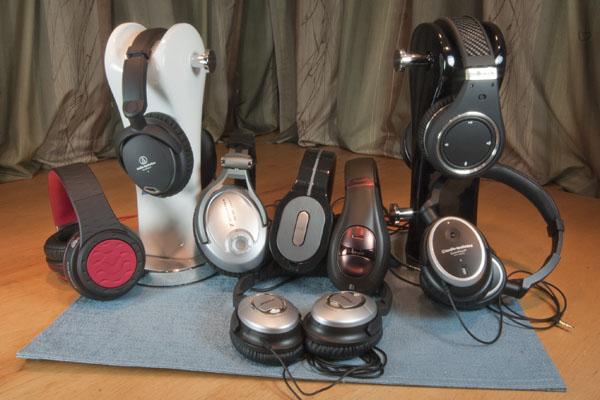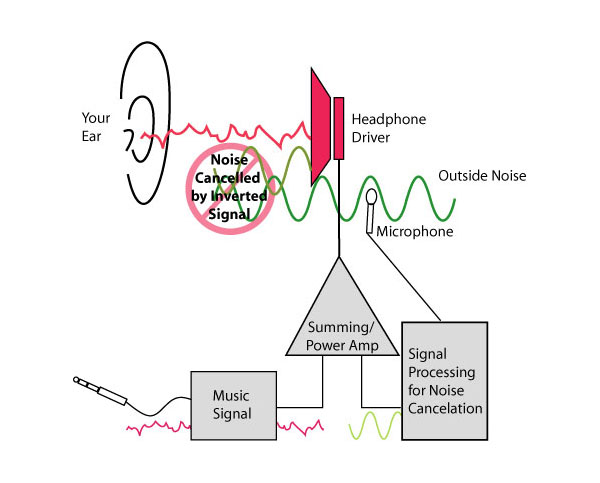| Columns Retired Columns & Blogs |
A Comparative Review of High-End Noise Canceling Headphones

This story originally appeared at InnerFidelity.com
What's All the Noise About?
A typical question from someone wanting a headphone to shut out environmental noise goes something like this: "I want to get rid of the noise around me, so I need noise canceling headphones, right?" No, not necessarily. Most in-ear headphones that seal in your ear canal will provide better isolation from outside noise than most active noise canceling headphones. And while they often won't provide quite as much isolation from outside noise, regular sealed headphones will often cost less and sound better than noise canceling headphones. (The active circuitry of noise canceling headphones often makes them sound a little weird.)
The thing is, Bose has managed to convince the popular consciousness that noise canceling is the way to get good isolation. I reckon people regularly ask for noise canceling headphones without any idea of what they're asking for, and that demand has spurred competition and new models from makers like PSB, Polk, Klipsch, and Fanny Wang. So, I rounded up a healthy handful of these new headphones and compared them with my favorite noise canceler, the Bose Quiet Comfort 15. But first, let's do a quick review of how a noise canceling headphone works.
How Noise Canceling Headphones Work
To tell you the truth, it's quite tricky. Way more complicated than you'd think...if you want to do it right. Let's start with a pair of regular sealed headphones sitting on your head: any noise around you is somewhat blocked by the headphones, but some muffled sound does manage to get in past the seal of the headphones. It is this muffled sound that we're trying to get rid of with noise canceling headphones.

Basically, noise canceling headphones have little microphones in the earpieces to sense the noise around your head. The signal from the mikes goes to some filtering circuitry (sometimes simple analog filters, sometimes very complex digital signal processing filters) so that it more closely matches the muffled sound inside the earpieces, and then it is inverted and sent to the driver in the earpieces. Because this signal is (hopefully) an exactly equal but opposite mirror image signal to the muffled outside sounds coming into the headphone, the two sounds cancel each other and leave you in silence. If you're playing music, it just gets summed in with the noise canceling signal in the headphone electronics, and when the noise gets canceled, you're left with your music.
The problem is, as noted above, accomplishing this is way more difficult than it sounds. The amount of ambient sound getting into the headphones changes with how you wear them; whether you're wearing glasses; and how much hair you have preventing a seal. So, the amount of cancellation signal needed changes with those factors as well. Some noise canceling headphones have microphones both inside and outside the earpieces, and the digital signal processing (DSP) algorithm is programmed to change with variations in the seal.
The noise in your environment can be of differing types, as well. Some noise canceling headphones may be programmed to characterize the type of sound in the environment and employ differing DSP schemes to more effectively cancel that particular type of environmental noise. For example, motors have a repetitive acoustic character allowing a smart DSP to predict the sounds it will be canceling and iteratively improve its canceling performance. On the other hand, most noise on an airplane is random wind rumbling, which needs a different DSP approach than repetitive sounds if it is to cancel noise optimally. A good noise canceling headphone will employ a lot of computing power to both cancel noise well and sound good.
There is so much going on in noise canceling headphones it's amazing the sound is intelligible at all...and, in fact, sometimes it's almost not. On the poorer units, outside noise can end up modulating the music you're trying to hear with some very odd effects. One pair I tried started to oscillate with a strange sort of feedback at roughly 40Hz when I turned it on...all by itself, no music playing or environmental noise.
Bottom line: I'd stay away from noise canceling headphones if possible. But if you're a regular plane or train commuter, or find yourself regularly in loud environments needing peace and quiet and don't want in-ear headphones stuck in your ear canals, noise cancelers are probably the way to go. Read on and I'll point you toward a few good ones...and away from some others.
- Log in or register to post comments




































